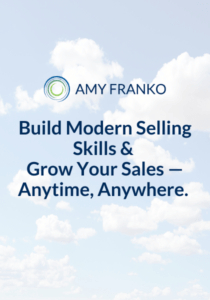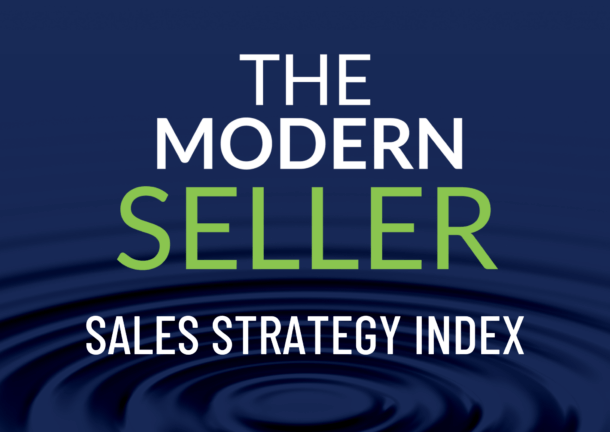If you’re in a professional selling or leadership role, you’re no stranger to the phrase “trusted advisor” and needing to be that advisor to your best clients and prospects. I see the trusted advisor role as part of a successful sales strategy– synonymous with modern selling and the evolution from past approaches that no longer work with today’s buyers.
What are some practical ways you can become that trusted advisor and continue to stay sharp and relevant? This article will share the foundations of being a trusted advisor, three relationship phases of the trusted advisor, and nine trusted advisor traits.
The Foundations of Being a Trusted Advisor
The most obvious foundation of being a trusted advisor is that your clients and prospects trust you to give them solid advice and ideas. There are two other foundations of being a trusted advisor that aren’t talked about as much: you as the advisor need strong trust in your client.
This is the concept of mutual lifetime value that is built over time. In the early stages of a trusted advisor relationship, you are in the trust-building phase. The conversations you lead and the advice you give helps them to trust you. The client being engaged in those conversations and implementing that advice helps you to trust them and creating that mutual value.
The last foundation of being a trusted advisor may be the most challenging, and that’s to build trust in yourself. Your honoring commitments to yourself, your continued engagement in building both your practical knowledge and emotional intelligence is what will help you to trust yourself. You’ll have confidence and gravitas that clients will value. Without filling your own trust bank, it’s challenging to fill the trust bank of others.
Three Relationship Phases of the Trusted Advisor
As you build relationships with prospects, the greater community, and your client base there are typically three phases a relationship can pass through. By contributing to Outcomes (horizontal axis) important to that individual, you’ll exponentially improve the Relationship Value (vertical axis).

Transactional Relationship.
These relationships can take one of two forms. It might be that the relationship is early stage and needs time to grow. The form is that it simply stays a transactional relationship because there may be value differences in what the client values versus what you can provide. In that case, you’ll likely not get to a trusted advisor relationship.
Business Relationship.
This is a strong middle ground, and your business relationships are those with the greatest potential to turn into partnerships. As you’re evaluating which relationships you can move along further, these are the relationships to choose from. Some relationships will remain in that tier. You’ll have some success as a trusted advisor, but what you’re really looking to earn is that next level.
Partnership Relationship.
These are the relationships with deep trust, and usually a long-term engagement or series of opportunities. Even when they come to completion, you’re still one each other’s networks contributing to outcomes and relationship value. These are also your centers of influence or strategic partnerships; there may not always be a revenue-based opportunity but you’re creating that partnership through idea generation, introductions, or advice.
Sales Strategy: Trusted Advisor Traits for Partnership Relationships with Your Clients
- This is your ability to help clients create a vision for their next evolution or future results.
- Navigating toward future while maintaining context from the past. Think of vision as the end desired state, and navigation as walking the path to get to that destination. There are times when that trust building includes an understanding of past context, so the past doesn’t become an impediment to the future.
- Doesn’t need to be in the spotlight. Trusted advisors don’t need the spotlight for themselves, they allow their clients to shine. However, this doesn’t mean that a trusted advisor isn’t comfortable in the spotlight when needed, especially in executive-level conversations.
- Trend spotting, able to connect the dots of various ideas. Trusted advisors pay attention to the global, industry, marketplace, and cultural trends that could create opportunities or risks for their clients. They have a curiosity about these issues, are willing to research them, and draw their own conclusions.
- Executive presence. Trusted advisors practice the four pillars of executive presence: business acumen, communication skills across a variety of styles and platforms, personal vitality, and overall impact.
- Emotional intelligence. Perhaps more important that your lane of expertise, your EQ is that ability to “read the room,” understand body language, and understand motivations behind decisions. It’s the practice of empathy and compassion, along with understanding how your decisions and behaviors affect other people and outcomes.
- Comfort and confidence with executive level individuals. Trusted advisors have a calm demeanor and confidence about them in virtually any situation, and they have a gravitas about them when it comes to working with influential leaders and executives.
- There’s a balance here that trusted advisors strike. They are open to conversation and other ideas, but also know when a decisiveness is required to help a client navigate their path.
- Holistic approach to the entire business and person, not just your area of expertise. Trusted advisors are comfortable being “our of their lane” in that they view the business landscape and the people they advise in a holistic way. Trusted advisors who take a broad approach to a client’s entire business and their personal goals in a partnership-level relationship will make the most significant impact.
Does Your Sales Strategy Help Your Sales Professionals Become Trusted Advisors?
I am the leader in sales strategy and sales leadership coaching, helping you to design best-in-class sales programs that accelerate growth. To significantly improve the outcomes of your sales strategy, let’s schedule a conversation. Don’t let your competition get an advantage. Contact me to schedule a conversation.



 Our Strategic Selling signature sales training program is now available online. This online sales learning program is ideal for professional services and B2B sales. Get started with 2 free lessons.
Our Strategic Selling signature sales training program is now available online. This online sales learning program is ideal for professional services and B2B sales. Get started with 2 free lessons.